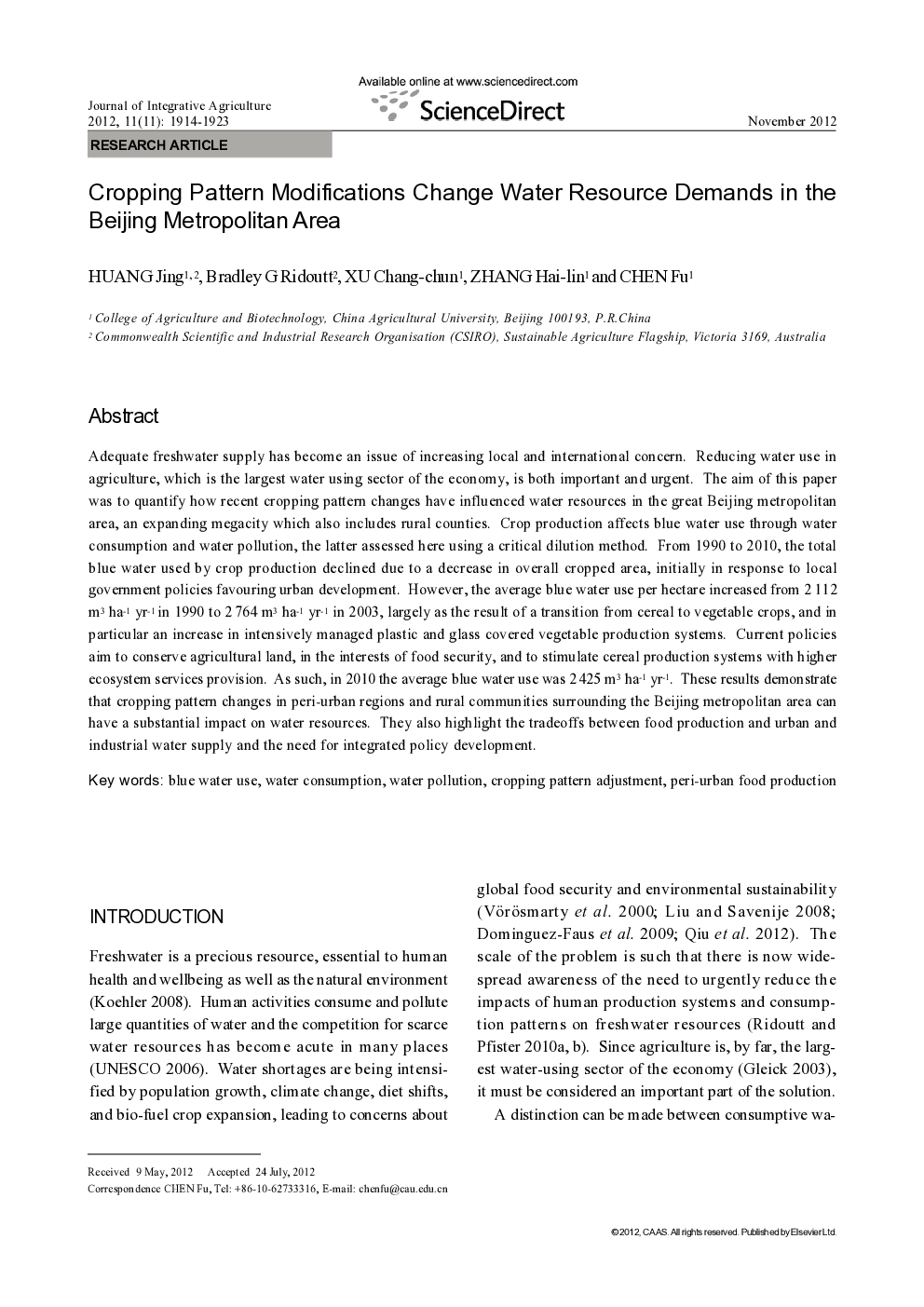| Article ID | Journal | Published Year | Pages | File Type |
|---|---|---|---|---|
| 4494996 | Journal of Integrative Agriculture | 2012 | 10 Pages |
Adequate freshwater supply has become an issue of increasing local and international concern. Reducing water use in agriculture, which is the largest water using sector of the economy, is both important and urgent. The aim of this paper was to quantify how recent cropping pattern changes have influenced water resources in the great Beijing metropolitan area, an expanding megacity which also includes rural counties. Crop production affects blue water use through water consumption and water pollution, the latter assessed here using a critical dilution method. From 1990 to 2010, the total blue water used by crop production declined due to a decrease in overall cropped area, initially in response to local government policies favouring urban development. However, the average blue water use per hectare increased from 2 112 m3 ha−1 yr−1 in 1990 to 2 764 m3 ha−1 yr−1 in 2003, largely as the result of a transition from cereal to vegetable crops, and in particular an increase in intensively managed plastic and glass covered vegetable production systems. Current policies aim to conserve agricultural land, in the interests of food security, and to stimulate cereal production systems with higher ecosystem services provision. As such, in 2010 the average blue water use was 2 425 m3 ha−1 yr−1. These results demonstrate that cropping pattern changes in peri-urban regions and rural communities surrounding the Beijing metropolitan area can have a substantial impact on water resources. They also highlight the tradeoffs between food production and urban and industrial water supply and the need for integrated policy development.
